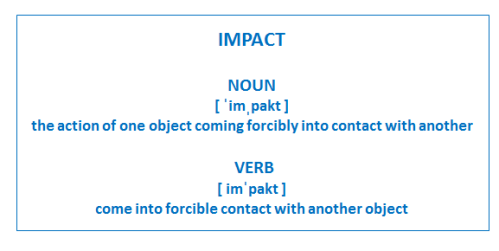Posted in Hand Hygiene, Healthcare Professional Engagement, Uncategorized, tagged academia, brave, engagement, front line ownership, Hand Hygiene, Healthcare, impact, NHS on May 20, 2015| Leave a Comment »

Posted in Hand Hygiene, tagged Future Research, Hand Hygiene, Hand Hygiene and Technology, Hand Hygiene Behaviour, Involvement of Healthcare Professionals, Meaningful Data on January 28, 2014| Leave a Comment »
Due to my current “limbo” status previously discussed, I find myself increasingly “plate spinning” at the moment, enjoying the luxury (challenge!) of being able to dive into a number of activities, rather than having to focus solely on one goal, as had been the requirement over autumn/winter last year. Therefore I am currently spending time reflecting on my own research, through writing up my findings and methods for various journal articles, and also working with existing and new partners to plan potential avenues for future research.
These future avenues include:
Whilst these topics are listed as separate bullet points, the wonderful aspect of both my reflective work recently, and the exciting discussions had so far, is the acknowledgement of how much overlap there is between each area. For example:
Can hand hygiene technologies produce meaningful data?
How can we enhance the infection prevention education of medical professionals through understanding behaviour?
What is the importance of engaging healthcare professionals when discussing hand hygiene technologies…and meaningful data…?
It is definitely an exciting time to be working and researching in infection prevention, and I am very lucky to be surrounded by a motivated and passionate community. I have been particularly supported and encouraged by those below, although this list is certainly not exhaustive, and I look forward to adding many more names as we move forwards in the months and years to come!
Overdue thanks to:
UHCW Infection Prevention and Control Team, Claire Kilpatrick, Julie Storr, Martin Kiernan, Jon Otter, Gary Thirkell, Neil Wigglesworth, Mark Radford, The Infection Prevention Society (IPS), #WeNurses, Jamie Mackrill, Kate Seers, Jeremy Wyatt, Christopher James
Posted in Hand Hygiene, Ph.D. Research, tagged blog, DebMed, Hand Hygiene, IIPW, Twitter, UHCW, WHO 5 Moments, YouTube on October 24, 2013| Leave a Comment »
As it is currently International Infection Prevention Week (IIPW) I thought I would write a quick post about hand hygiene promotion today – as it ties in with a lot of recent activities I have been involved in alongside tweaking the (almost complete!) PhD dissertation.
In addition to IIPW, earlier this month saw Global Handwashing Day (UK site here) whilst on May the 5th we celebrated SAVE LIVES: Clean Your Hands, the WHO annual Hand Hygiene awareness day. Each of these carefully planned and well supported events allows the topic of Infection Prevention (and importantly for me, hand hygiene) to be promoted and discussed at perhaps a wider level than during the rest of the year. One of the activities I have been involved in is writing a separate blog on human behaviour, technology and the WHO 5 Moments, which has been a great source of feedback and discussion.
Anyone visiting their local hospitals or health centres during these periods has probably noticed promotional material regarding hand hygiene, or seen information about the activities of the IPCT at that particular location. A few photos from Twitter this week allowed a glimpse at the effort the Countess of Chester Hospitals NHS Foundation Trust IPCT have been putting in to promoting their work (captions their own)….

By keeping your hands clean, you are helping your local hospital to stay infection free #InfectionPreventionWeek
UHCW IPCT also used Twitter to promote their activities during IIPW. Every Wednesday they #WIPEWednesday – standing for Wash Hands – Isolate promptly – Prudent Antibiotic prescribing – Environmental Cleaning. This week they launched their new #WIPE stickers, and followed a board-to-ward strategy to ensure everyone got the message. Here are just a few of their photos (captions their own):

Our Chief Operating Officer knows what the I is for in #WIPE – he’s got a sticker & a card! #WIPEWednesday #IIPCW

Who knows the P of #WIPE ? Our CEO might be the man to ask? His sticker invites you to! #WIPEWednesday #IIPCW
They have also been doing some great work with the Paediatric teams and Patients, using creative play to produce some beautiful hand hygiene promotional work:

They maybe our smallest patients, but they’re big on getting involved! #IIPC2013 #ptsafety #handhygiene
Finally they also launched their much awaited #HygieneHop video last week….a must see and share for all interested in Infection Prevention and Hand Hygiene: http://www.youtube.com/watch?v=eGCPPqGweNQ&sns=tw
Enjoy!!
Posted in Hand Hygiene, Ph.D. Research, Uncategorized, tagged Hand Hygiene, ICPIC 2013, Infection Control, Poster, World Health Organization on July 8, 2013| 1 Comment »
In addition to my recent discussion of Hand Hygiene posters on display at ICPIC 2013 Jon Otter has provded a great blog overview here.
Due to the hectic schedule poor Jon didn’t get to visit a single poster…so for him, and for anyone else who didn’t get a chance to visit either the Poster exhibit or ICPIC 2013 – here is my poster, discussing “Technologies to measure hand hygiene: examining the incorporation of the World Health Organisation (WHO) 5 moments“. A link to the abstract can be found here, courtesy of an Antimicrobial Resistance and Infection Control supplement.
The poster provides an overview of Studies 1 and 2 which explored the current state of measuring Hand Hygiene within an NHS acute setting, and then the potential of technologies as an alternative or complementary method for providing measurment. Whilst Study 1 found limitations in the current process led to perceptions of “Meaningless Data”, Study 2 found current technologies failed a purpose designed “fit-for-purpose” assessment, yet may offer a facility to provide “Meaningful Data”.
ICPIC 2013 provided an interesting opportunity to share these studies with researchers, practioners and experts in the IPCT field, and the incoporation of the global WHO 5 Moments guidelines allowed a common starting point for discussion. I was particualrly enthused to hear of the findings of the WHO’s systematic review on Electronic Surveillance, presented by Benedetta Allegranzi, which agreed that current systems do not yet have the capabilities to monitor all WHO 5 Moments, and whilst they offer benefits further research is required before a such innovations are adopted as standard.
Posted in Hand Hygiene, Ph.D. Research, Uncategorized, tagged Hand Hygiene, ICPIC 2013, Study 2, Study 3, WHO 5 Moments on July 3, 2013| Leave a Comment »
The second theme discussed in ICPIC 2013 posters that I enjoyed pondering was that of Hand Hygiene compliance rates split by each of the WHO 5 Moments.
A clear example of this can be seen in the figure from Ribero et al’s poster (P118 – left), where compliance levels in the ICU at each of the moments were measured pre- and post the study intervention. Compliance After Patient Contact was found to have the highest rate of compliance (both pre and post intervention), followed by Before Patient Contact, then After Body Fluids Exposure Risk. After Contact with Patient Surrounding and Before an Aseptic Procedure had the lowest levels of compliance respectively.
These were surprising findings for me, especially the fact that Moment 5 (After Contact with Patient Surroundings) did not show the lowest levels of compliance; as I had found this Moment the one to be perceived most likely to be considered able to be “dropped” if workload/other factors also occurred, and the Moment most Healthcare Professionals in my Study (2) felt likely to be “missed”. Also, other literature supports Moment 5 as the one with lowest levels of compliance – for example Rossini et al. (2013, in press) found M5 compliance = 22.5% compared with M1 =36.5%, M2 =54.5%, M3 =25.2% and M4 = 25.4%.
Finally the figure (right) provided by Grayson et al (2011) – who also spoke at ICPIC 2013 – from the Australian National Hand Hygiene Initiative shows Moment 5 having the lowest rate of Hand Hygiene, and a different spread of compliance over the Moments than that presented by Ribeiro et al at ICPIC.
A further poster at ICPIC 2013, that of Ikeda et al (P119 left) caused additional confusion, with another variation of spread being seen across the 5 Moments. Here, Moment 3 was found to have the highest level of compliance, followed by Moment 4, Moment 5, Moment 2 and Moment 1.
As this is a blog post rather than a paper I’ll leave the discussion brief; but naturally variables such as context, method and sample size need to be considered when comparing findings across studies. However, for me the lack of consistency drives me forward with my next level of research, which hypothesises that there is a difference between the likelihood of Hand Hygiene dependent on the activity being performed (based on Study 3 – see preliminary results here). My future work aims to investigate whether the 5 Moments can be “split” in a similar way, dependent on the activities each may represent, and therefore could be treated differently in terms of education and measurement opportunities.
Based on my work to date I would have expected more consistency across emerging results employing the 5 Moments….but it is still early days. I need to wait for papers to develop based on the posters shown at ICPIC 2013, and carefully consider additional contextual factors. It’s definitely thought provoking…I’ll give it that…
Posted in Hand Hygiene, Ph.D. Research, Uncategorized, tagged Education, Hand Hygiene, ICPIC 2013 on July 2, 2013| 2 Comments »
 There were over 400 posters on display at ICPIC 2013, and it took me almost 2 days to visit them all, spread as they were over all the floors of the CICG.
There were over 400 posters on display at ICPIC 2013, and it took me almost 2 days to visit them all, spread as they were over all the floors of the CICG.
The next few blog posts will briefly review a few of these posters, the ones which struck a chord with me in terms of how they related to my current work (dissertation), and perhaps how they may offer direction/influence my future plans. As such they are predominantly on the topic of Hand Hygiene (no surprise!), with the first two looking at education – to be followed next by a discussion of the WHO 5 Moments for Hand Hygiene.
Kaur et al – Poster 143; Poster 145
– Key findings of interest –
Their finding ties in with an emergent theme in my own work, and one which I am hoping to develop further in my future work.
I call it the “Buckaroo Hypothesis”, which in brief suggests that the topic of Hand Hygiene education needs further review to avoid Healthcare Professionals rejecting it as a concept that needs teaching. Responses from interviews from my research included classic phrases such as “…of course I’d wash my hands when I’ve got blood on them and stuff”. The idea that education or prompting may be required was not always perceived positively.
My work involves the investigation of behavioural aspects of Hand Hygiene – Inherent and Elective components – which appear to affect the likelihood of Hand Hygiene occurring. Understanding that some Hand Hygiene maybe more “automatic” than others may prove a gateway to discussing Hand Hygiene in a way that is more engaging to both medical students and other Healthcare Professionals. Inherent and Elective Hand Hygiene is the basis of my 3rd Study, and you can find out more information here.
Posted in Hand Hygiene, Ph.D. Research, tagged Geneva, Hand Hygiene, ICPIC 2013 on June 23, 2013| Leave a Comment »
Almost ready to go to Geneva to take part in ICPIC 2013, and am very excited; both to have to opportunity to take my research to such an event, and because the programme is absolutely packed with Hand Hygiene related topics (amongst many other IPC issues!).
Abstracts were released last week – and make perfect reading to prime the appetite – my poster is P155…and I’ll add a copy here post-conference….
Hope to blog from Switzerland…and plan to Tweet lots!
Posted in Hand Hygiene, Ph.D. Research, Uncategorized, tagged Domain Knowledge, Hand Hygiene, ICPIC 2013, Infection Control, National Health Service, Study 1, Study 2, Study 3 on June 19, 2013| 3 Comments »
The past month has been all about the writing…although that includes a lot of reading, re-reading, editing, re-writing and, perhaps oddly, drawing too. However, progress is undoubtedly being made, and I now have some really thick stacks of paper which have a very strong resemblance to ‘chapters’; you don’t even need to look at them in too much of a funny way or anything!
I have been concentrating on writing up my empirical studies which formed the mixed methods case study I am using as the basis for my PhD research. This case study has been carried out at a large NHS hospital, with great support from Healthcare Professionals participating in and facilitating the research. Participants from all identified areas of the audit process were included in interviews and observations, to explore the research question:
What is the importance of Domain Knowledge and Human Behaviour for successful Quality Audit Processes and (associated) Technology Development?
Now I get the very exciting opportunity to take the details of two of these studies (1 and 2) and share them with some of the leading experts within the field of Infection Prevention, as I have been fortunate enough to get a place at ICPIC 2013 in Geneva. I hope to Tweet as much as possible, and if time allows I will write a quick blog whilst I am out there; if not then I am sure I will have plenty to say about it all once I am back. Even reading (and highlighting!!) the conference programme this afternoon has caused my excitement levels to rise dramatically….
(NB: Will be back to the dissertation writing July 2nd….promise!)
Posted in Hand Hygiene, Ph.D. Research, Uncategorized, tagged Claire Kilpatrick, Future Plans, Hand Hygiene, ICPIC, Infection Control, Infection Prevention, Migraine, Thesis on March 14, 2013| 1 Comment »
The past few weeks since finishing data collection have been spent going back over my thesis outline, working out what can be “written up without delay”, what “needs more work”, and what I would ideally like to put in a big box called “never look at again”….
Naturally it is that third category that contains rather a lot of the “meat” of the dissertation at the moment, and it takes a lot of self-discipline to ensure that each of the “issues” are logged, so that I can plan to tackle them as I write-up, even if it is not something I can do all at once. Fortunately I have been able to call on some great sources of assistance so far to help me with each “issue” I have plucked from the box, and therefore I am hoping that over the next few months the balance of what can be “written up without delay“ and what I’d like to “never look at again” will swing…but one thing is for sure, the whole thesis “needs a lot more work”.
What I have found really useful though, is the use of copious “pictures” to help me translate both my ideas and actions into formats that are easier to communicate – I am now forever drawing process flow diagrams of some kind, showing how my thoughts are flowing, what actions I carried out, and why certain processes were carried out in particular orders. Whilst these started out as being tools to help me avoid “head-pop“, I have now found that they may well be jolly useful to include in the finished written dissertation, to help the examiner avoid the same fate, and to save the legendary 1,000 words…
The “head-pop” issue has actually been a serious one this past week, as I’ve succumbed to 2 migraines – which as previously noted are not the best news. Having to cancel hard to arrange meetings is never a good thing, nor is the time lost to feeling like you’ve just run a marathon. And that’s an analogy I can just about work with these days – except with a migraine you miss out on the shiny medal and cake rewards. Still, fingers crossed it has just been a blip, and happily I managed to proceed with a re-arranged meeting, during which I learnt some fascinating new information which will help underpin a major theme in my discussion section, and plans for future Post-Doc work. Well worth the snowy walk up to Warwick Medical School!
I also had a fantastic discussion re: my plans for Post-Doc work, which has really helped clarify the direction I want my research to go in, as well as help motivate me to keep up the pressure to get a thesis draft produced sooner rather than later. More details on this further down the line, suffice to say Hand Hygiene remains close to my heart!
Outside the thesis write-up the past few weeks have seen me once again having some great help and advice from Claire Kilpatrick who gave some really useful feedback and encouragement on my ICPIC abstract draft. ICPIC promises to be an amazing event, with some of the leading experts in the Infection Prevention field coming together, and I am keeping everything crossed that I will be able to attend; being able to take contribute my research in some capacity would only be the icing on the cake.
And finally, exciting times tomorrow on the Hand Hygiene and Technology front….will post soon…..
Posted in Hand Hygiene, Ph.D. Research, Uncategorized, tagged Hand Hygiene, Hand Hygiene Compliance, Human Behaviour, Infection Control, PhD, Technology, Thesis on February 25, 2013| 1 Comment »
 So last week I managed to finish collecting the in-situ data for Study 3 which explores the link between Human Behaviour and Hand Hygiene – and has been a great opportunity to learn more about the day-to-day reality of life on an NHS Acute ward, which really brings context to the other elements of my work, about auditing, technology and Hand Hygiene compliance.
So last week I managed to finish collecting the in-situ data for Study 3 which explores the link between Human Behaviour and Hand Hygiene – and has been a great opportunity to learn more about the day-to-day reality of life on an NHS Acute ward, which really brings context to the other elements of my work, about auditing, technology and Hand Hygiene compliance.
I now have no more data to formally collect, which is a strange feeling, as there are actually so many more questions to ask – however I am at the stage of the PhD process where discipline has to step in, and the doors have to close on further investigation in the interests of ensuring the thesis is written, conclusions are drawn, and a line is drawn in the sand. BUT THEN….then the future research can be planned!
And that is where March comes in – as I have a number of exciting meetings set up then, to help guide the potential future threads which are starting to spin out of my thesis already and into the wider Infection Prevention community. Will be great to talk about what has happened so far, to hear what other people have been up to, and to discuss what could happen next. There is so much still left to do in this field, but continued collaboration is of paramount importance to ensure we build on what has gone before, and prevent re-inventing the wheel. Things look bright…
For now, I have my thesis writing motivation plan – the day it is handed in, I am getting an entire cake to eat. Oh yes. You heard right. Because deep down, we all want to be Mary Berry when we grow up don’t we?